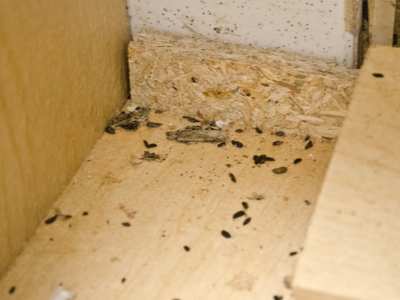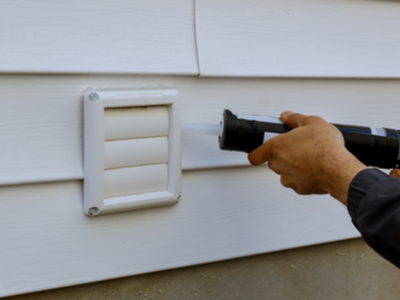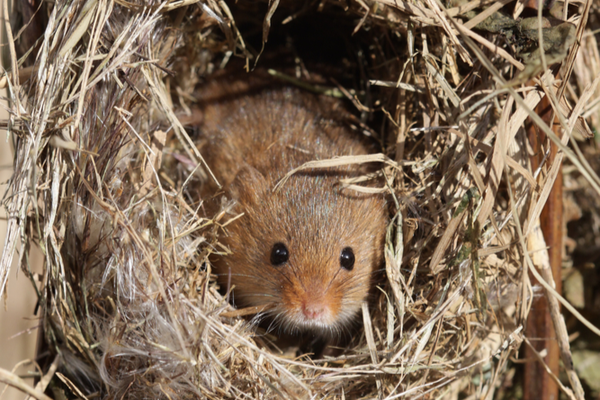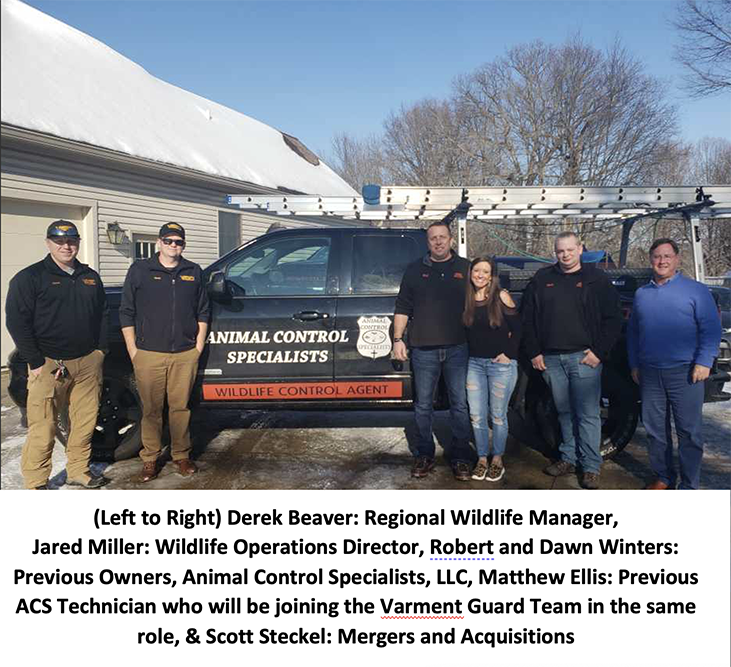No. Mice can’t hibernate or reduce their caloric or body temperature needs in any way. The only way mice can survive freezing temperatures is by taking shelter in a warm place where they can find food. They’ll start looking for overwintering sites as soon as temperatures start falling in autumn.
The fact that mice can’t hibernate dictates their behavior all year. Mice are always preparing for winter and will try to nest in places with the food and warmth they need to survive winter. Unfortunately, this may be under your roof. Here’s how you to tell if you have mice nesting in your home, and how to get rid of mice:
How to Tell if You Have Mice in Your Walls or Home
Mice are small, stealthy, and nocturnal, so it can be surprisingly difficult to tell if they’re infesting your home. However, even the sneakiest mouse leaves behind telltale signs of their presence if you know where to look. If you suspect you have a mouse problem, look for the following signs:

- Food contamination. Mice often sneak into pantries to feed on dry goods like grains, nuts, and candy. Look for gnawed or soiled food, or damaged packaging material.
- Damage to home goods. Mice will gnaw on just about anything soft enough to not to hurt their teeth. Look for bite marks and damage to books, furniture, electrical wiring, and other “soft” home decor.
- Droppings. Mice droppings are very small, dry, brown, and cone-shaped. Look for mouse poop in dark corners and runways.
- Runways. Mice have poor eyesight and tend to rely on a few reliable pathways through a home. Over time, the grime on mice bodies creates a greasy residue or stain on the walls along these pathways.
- Trash accumulation. Mice build their nests out of collected scraps of paper, cloth, insulation, and other trash. You might find these messy nests in dark corners and beneath furniture.Trash accumulation. Mice build their nests out of collected scraps of paper, cloth, insulation, and other trash. You might find these messy nests in dark corners and beneath furniture.
- Odors. Unsurprisingly, mouse droppings and urine smell. The longer and more extensive the infestation, the worse the smell. If you smell musty, unpleasant odors in your basement, you may have a mouse infestation.
- Scratching or squeaking sounds. Mice become more active at night. You might hear baby mice squeaking, or adults running around.
Why do I have mice in my home?
Mice and other rodents choose where to nest based on where they can most reliably get the things they need to live. If you have mice nesting in your home, it’s because your home is a source for the following needs:
- Warmth: First and foremost, mice need to stay warm to survive the winter. They will follow air drafts into your home and hunker down in warm, dark places.
- Food: Mice need to eat continuously to stay healthy, even during winter. They need a constant source of food and they’re able to smell if your home can provide it.
- Water: Mice don’t need a lot of water, but they drink it constantly. They’ll find plumbing leaks, runoff, or even just condensation in any secluded area.
- Shelter: Mice are shy creatures—they have to be! They’re attracted to dark, cluttered, secluded areas where they won’t be bothered… by predators or by you!
How to keep mice out of your house
Mice don’t need much to get inside your home; they can squeeze through any opening the width of a pencil or wider. The best way to keep mice out is to find and cut off any of these openings and access points:
- Door and window frames: Mice frequently sense drafts coming through small gaps between doors and windows and their frames. Reseal and weatherproof your frames seasonally.
- Utility lines: Mice may sneak through small gaps between utility lines like plumbing pipes and power lines in your home’s walls. Seal these openings with caulk.
- Gaps in baseboards and foundation: Even the tiny cracks and gaps that develop at the bottom of walls and flooring may make for sustainable entry points for mice. Seal up cracks and gaps with caulk or steel wool.h caulk or steel wool.h caulk or steel wool.h caulk or steel wool.
- Vents, chimneys, and shingles: Mice often climb up downspouts and gutters to access openings on your roof. Fix broken roofing shingles and install grates to keep mice from getting through vents and chimneys.
- Garage doors: Mice may enter your home via an attached garage. Keep your garage door sealed tight.

Mice are excellent climbers and jumpers. Not only can they squeeze through small entries but they can also enter in unlikely spots. Don’t limit your pest-proofing to the ground level. In your kitchen, keep food in sealed containers that rodents can’t chew through. Mice can only go a couple days without food.
Get Professional Mouse Pest Control
Unfortunately, the fact that mice can’t hibernate means you have to watch out for them all year long. Once mice establish themselves in your home, they won’t leave even after it warms up outside. The sooner you can find and kick mice out, the better.
To learn more about pest control for mice in Minneapolis, MN, Lincoln, NE, the Quad City region, or throughout Plunkett’s large service area, please contact us today. We can remove your current infestation and keep mice from returning!









